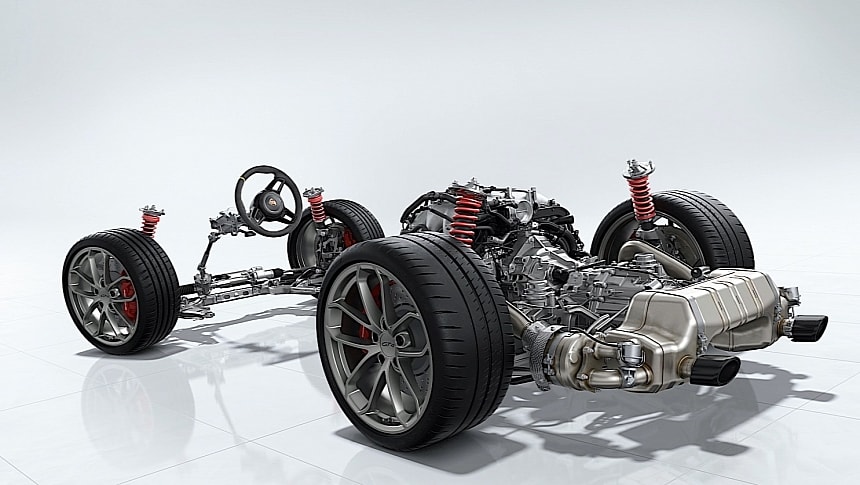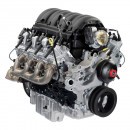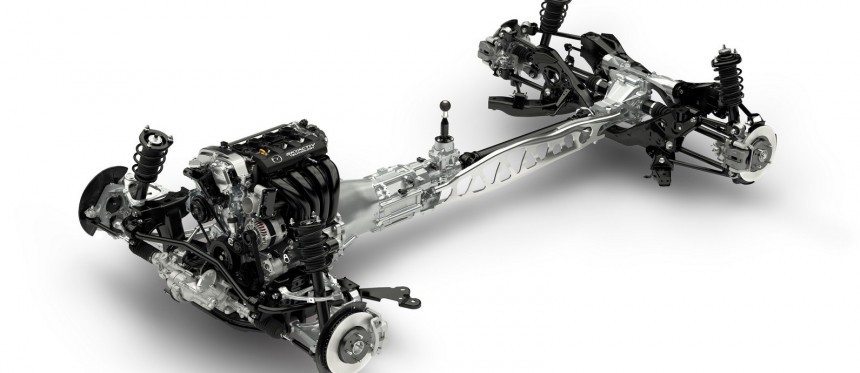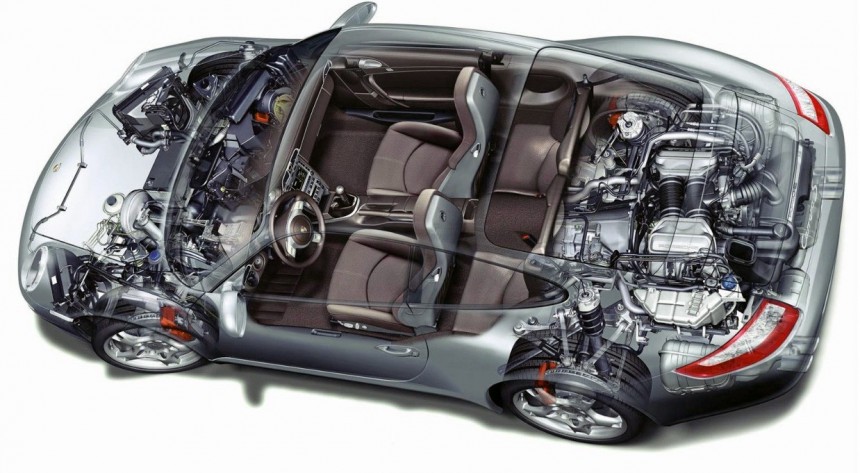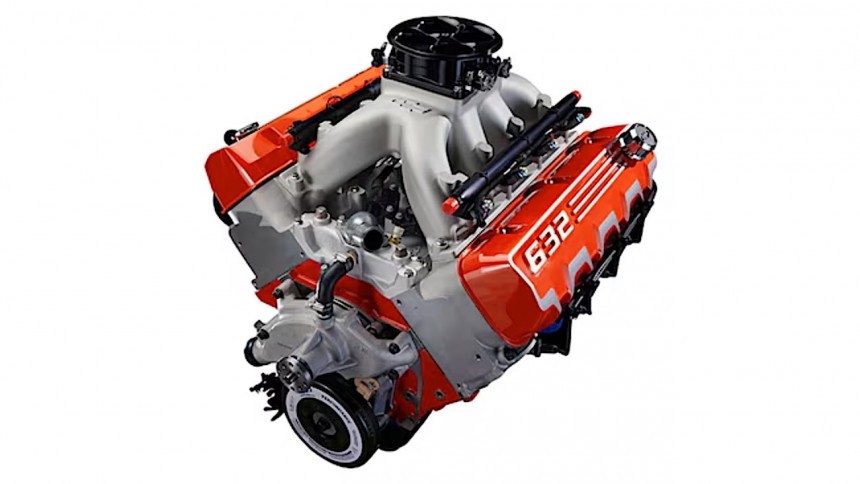In some sense, cars are the forces that drive our world. They help us shorten distances, travel faster than we’ve ever thought possible, and make our lives degrees of magnitude easier. All of that was made possible by the invention of the internal combustion engine, which has been the beating heart of cars for more than a century now.
Rivers of ink have flown over the years to tell the history and types of engines, but an often overlooked thing about them is the layout. Whether we’re talking about the engine’s position inside a car’s body or the way they are constructed, an engine’s layout is crucial as it impacts both how a car drives and feels, but also its power levels and efficiency.
Some of the layouts you’re about to discover in the lines below are no longer in use because, as it usually happens in the world of engineering, some solutions were not future-proof, with reasons for that ranging from cost-effectiveness to complexity. Others, on the other hand, still make the rounds today as they’ve proven to be highly successful.
As said, an engine’s layout has to do either with its position inside a car, or with the position and number of its cylinders. We’ll start our journey into this fascinating world with how carmakers place or used to place powerplants inside a vehicle. To make things easier to understand, we've split them into three essential groups.
The most simple and most common way of installing an engine into a car is to place it at the front, over the front axle, so it can power either the front wheels, or all four of them. When the engine is used to drive the front wheels alone, the setup is sometimes called FF, an acronym that is supposed to stand for front-engine and front-wheel drive.
Because the engine is placed at the front of the vehicle, somewhat outside its main body, it has little impact on interior space, allowing carmakers to get as creative as they like when it comes to offering drivers and passengers enough room to do their thing.
This solution also makes it rather easy to handle a vehicle, but the downside is that the weight distribution is not ideal: cars made this way tend to be heavier at the front, thus increasing the chance of understeering. Also, front-engined cars tend to have a high center of gravity, and that can impact stability.
There are, however, a lot of things going for this type of design, in addition to the ones mentioned above, and that is why it’s so widespread. First up, because most of the cars in the world today are front-wheel drive, positioning the engine over the front axle makes the most sense.
Then, having the engine at the front translates into uncomplicated ways of ensuring it stays cool during operation: one just needs a radiator with access to cold air to get the job done.
Finally, if something goes wrong and the engine needs servicing, or when maintenance needs to be performed, mechanics don’t have to dismantle half the car to get to the engine.
Engines fitted at the front of the car can be installed either transversally or longitudinally, and they can be made to spin the wheels on the front axle on the rear one, or both.
There is a variation of the front engine configuration called front-mid. In this case, instead of being placed over the front axle, the powerplant makes its way in the space between that and the passenger compartment.
It’s not something that’s still in use on a large scale today, but it made a name for itself in the hands of Ferrari and Mercedes, who used it for their cars because of the clear advantages it brought in weight distribution and center of gravity.
Front-mid engines can also be used to power both axles at a time or at once, as seen on the likes of the Honda S2000, Alfa Romeo 8C, Lexus LFA, and Ferrari FF.
If we were to live in a perfect world, then a mid-engine configuration would probably be commonplace. Believe it or not, the engine is a car’s single heaviest component, so placing it in the middle of the thing would have clear advantages when it comes to weight distribution, reduced engine vibration, and, ultimately, killer traction.
But moving the engine to the middle of the car means sacrificing a lot of passenger space. That is not something to be desired by many of the world’s carmakers, who are in the business of making products the masses can use, but it is something that’s employed in racing and in more exquisite sports cars. The exception would be the now-defunct Toyota Previa, which, for a couple of decades or so, was the world’s only mid-engined minivan.
Placing the engine in the middle of the car means sticking it between the two axles. That makes it an ideal setup for driving fast and hard during races, and it was successfully employed on high-profile vehicles such as the Porsche Boxster, Lotus Esprit, and a bucket load of Ferraris (including the 348 and Mondial). In today’s world, the Chevrolet Corvette Stingray is the most famous vehicle to use such a layout.
Usually, mid-engined vehicles come with rear-wheel-drive or all-wheel-drive. The mid-engine rear-wheel drive setup is called RMR, and it's frowned upon by the mechanics who have to work on such cars.
Biology teaches us that pushing is far easier and less straining for the human body than pulling. In some sense, cars with the engines at the back try to capitalize on that, even if, for most people, such a setup might seem odd.
Whereas a front engine sits over the front axle and a mid one between that and the rear one, an engine at the back of the car sits, naturally, over the rear axle. Such a configuration comes with clear advantages, including better handling and improved braking, while at the same time allowing the same kind of interior space as a front-engine car. As an interesting side effect, the luggage space that was available in the trunk moves at the front and becomes a… frunk.
Like all things in life, the design has some disadvantages, including the car’s tendency to oversteer. This solution's traction advantage in wet or dry conditions disappears when snow, ice, or sand are involved.
Some early-model rear-engined vehicles also had limited steering abilities, especially under heavy acceleration. Furthermore, the pendulum effect caused by placing the engine behind the rear axle made some of these models tricky to handle, especially without any driver assistance systems.
Then, cooling an engine at the rear requires some complex jogging of the airflow generated by the car's forward motion.
That hasn’t stopped carmakers from going for this design, and some still use it. The most famous exhibit of this configuration is the Porsche 911, but the best-selling rear-engined vehicle is the Volkswagen Type 1, the one the world got to know as the Beetle.
If you live in crowded cities, chances are you rode inside a rear-engine vehicle and didn’t even know it: most of the world’s buses have the engine installed at the back.
Despite the front engine design being the most popular today, you should know that’s not how things started. The world’s first self-propelled and practical automobile, the one made by Karl Benz in 1885, had an engine in the back.
And now, as promised, a few things about how the engines themselves are laid out when produced. No matter over which axle they go, engines come in different configurations depending on what they are meant to achieve. And the way they differ is the position and setup of the cylinders.
Just like when it comes to the position of a powerplant in a car, some engine cylinder layouts are more popular than others. And in today’s world, nothing is as popular as a straight, or inline, engine, used by pretty much everybody because, well, they are relatively cheap to make.
As the name suggests, the cylinders of such powerplants are placed in a row, one after the other. Generally speaking, these kinds of engines have between three and six cylinders, but the four-cylinder setup is the most common.
Straight powerplants can be installed in a vehicle either perpendicular or parallel to the length of the car.
Theoretically, this boxer-style design would have great advantages regarding the center of gravity, working wonders for sports cars. The downside is that such an engine is much wider than conventional designs, making it quite impractical.
That hasn’t stopped some carmakers from giving it a shot, the most famous of them being Porsche and Subaru.
If you take a flat engine and bend the two rows of cylinders a bit, until they form a 60-degree angle and the shape of the letter V, you get the mighty V engine, the popular choice of powertrain for American muscle cars, trucks, and SUVs, but also for some other high-profile vehicles.
This configuration requires an even number of cylinders, and there can technically be anywhere from two to 24 of them. The automotive industry, however, seems to have settled on eight of them, and there is no more powerful word in the automotive world today than a V8. V12s could have had that honor, but there are so few of them out there that they almost don’t count.
The cylinders in a V engine use a single driveshaft, the crankshaft is shorter, and the torque levels, especially at low RPMs, are higher than in other designs. They also sound great when paired with the proper exhaust system, making them the perfect choice for custom vehicles as well.
This setup is one of the most pretentious one around, and that’s why it is mostly used in luxury or very exotic cars. Because of the layout, a W engine can comprise anywhere from three to 30 cylinders, but for automotive applications the most common is the W12 one, with four cylinders per row, like in the Bentleys.
Believe it or not, there are more types of engines, but because they are used very rarely they don’t come into the spotlight all that often. And they are also named after letters because of the way the cylinders are arranged.
An X engine, for instance, has the cylinders set up in the shape of the letter X. Not many were made over the years, and most were deployed in aircraft, generally during the Second World War, by Rolls-Royce or Daimler-Benz. General Motors made some, too, but it installed them on naval ships.
The so-called U engine is created by connecting two separate straight engines together and connecting them with the shaft. They have also been used in powerplants designed for the aviation sector, but these engines also made it into some cars, like the Fiat 806 of the 1920s, tanks (the Sherman), locomotives, and even motorcycles (the Suzuki RG500 and the Ariel Square Four).
Last but not least the H engine is created by placing two flat engines next to one another and connecting them through gears and chains. Popular in aviation and powerboats, they have been made famous by their use in Formula 1 – the example deployed in the Lotus 43 helped driver Jim Clark of the British Racing Motors (BRM) team win the 1966 U.S. Grand Prix.
As you can see, each engine configuration has its pros and cons. That is why neither is universally considered the best for an internal combustion engine. Instead, each solution depends on specific targets, including financial restrictions, target segments, and expectations.
With our apettite open by the story we ran a while ago on engine design configurations that will probably never return to production, we decided to go over the engine setups that have been used by automakers over the decades.
Some of the layouts you’re about to discover in the lines below are no longer in use because, as it usually happens in the world of engineering, some solutions were not future-proof, with reasons for that ranging from cost-effectiveness to complexity. Others, on the other hand, still make the rounds today as they’ve proven to be highly successful.
As said, an engine’s layout has to do either with its position inside a car, or with the position and number of its cylinders. We’ll start our journey into this fascinating world with how carmakers place or used to place powerplants inside a vehicle. To make things easier to understand, we've split them into three essential groups.
Front engine configuration
Because the engine is placed at the front of the vehicle, somewhat outside its main body, it has little impact on interior space, allowing carmakers to get as creative as they like when it comes to offering drivers and passengers enough room to do their thing.
This solution also makes it rather easy to handle a vehicle, but the downside is that the weight distribution is not ideal: cars made this way tend to be heavier at the front, thus increasing the chance of understeering. Also, front-engined cars tend to have a high center of gravity, and that can impact stability.
There are, however, a lot of things going for this type of design, in addition to the ones mentioned above, and that is why it’s so widespread. First up, because most of the cars in the world today are front-wheel drive, positioning the engine over the front axle makes the most sense.
Then, having the engine at the front translates into uncomplicated ways of ensuring it stays cool during operation: one just needs a radiator with access to cold air to get the job done.
Finally, if something goes wrong and the engine needs servicing, or when maintenance needs to be performed, mechanics don’t have to dismantle half the car to get to the engine.
Engines fitted at the front of the car can be installed either transversally or longitudinally, and they can be made to spin the wheels on the front axle on the rear one, or both.
There is a variation of the front engine configuration called front-mid. In this case, instead of being placed over the front axle, the powerplant makes its way in the space between that and the passenger compartment.
It’s not something that’s still in use on a large scale today, but it made a name for itself in the hands of Ferrari and Mercedes, who used it for their cars because of the clear advantages it brought in weight distribution and center of gravity.
Front-mid engines can also be used to power both axles at a time or at once, as seen on the likes of the Honda S2000, Alfa Romeo 8C, Lexus LFA, and Ferrari FF.
Mid-Engine Configuration
But moving the engine to the middle of the car means sacrificing a lot of passenger space. That is not something to be desired by many of the world’s carmakers, who are in the business of making products the masses can use, but it is something that’s employed in racing and in more exquisite sports cars. The exception would be the now-defunct Toyota Previa, which, for a couple of decades or so, was the world’s only mid-engined minivan.
Placing the engine in the middle of the car means sticking it between the two axles. That makes it an ideal setup for driving fast and hard during races, and it was successfully employed on high-profile vehicles such as the Porsche Boxster, Lotus Esprit, and a bucket load of Ferraris (including the 348 and Mondial). In today’s world, the Chevrolet Corvette Stingray is the most famous vehicle to use such a layout.
Usually, mid-engined vehicles come with rear-wheel-drive or all-wheel-drive. The mid-engine rear-wheel drive setup is called RMR, and it's frowned upon by the mechanics who have to work on such cars.
Rear Engine Configuration
Whereas a front engine sits over the front axle and a mid one between that and the rear one, an engine at the back of the car sits, naturally, over the rear axle. Such a configuration comes with clear advantages, including better handling and improved braking, while at the same time allowing the same kind of interior space as a front-engine car. As an interesting side effect, the luggage space that was available in the trunk moves at the front and becomes a… frunk.
Like all things in life, the design has some disadvantages, including the car’s tendency to oversteer. This solution's traction advantage in wet or dry conditions disappears when snow, ice, or sand are involved.
Some early-model rear-engined vehicles also had limited steering abilities, especially under heavy acceleration. Furthermore, the pendulum effect caused by placing the engine behind the rear axle made some of these models tricky to handle, especially without any driver assistance systems.
Then, cooling an engine at the rear requires some complex jogging of the airflow generated by the car's forward motion.
That hasn’t stopped carmakers from going for this design, and some still use it. The most famous exhibit of this configuration is the Porsche 911, but the best-selling rear-engined vehicle is the Volkswagen Type 1, the one the world got to know as the Beetle.
If you live in crowded cities, chances are you rode inside a rear-engine vehicle and didn’t even know it: most of the world’s buses have the engine installed at the back.
Despite the front engine design being the most popular today, you should know that’s not how things started. The world’s first self-propelled and practical automobile, the one made by Karl Benz in 1885, had an engine in the back.
And now, as promised, a few things about how the engines themselves are laid out when produced. No matter over which axle they go, engines come in different configurations depending on what they are meant to achieve. And the way they differ is the position and setup of the cylinders.
Straight engine (inline)
Just like when it comes to the position of a powerplant in a car, some engine cylinder layouts are more popular than others. And in today’s world, nothing is as popular as a straight, or inline, engine, used by pretty much everybody because, well, they are relatively cheap to make.
As the name suggests, the cylinders of such powerplants are placed in a row, one after the other. Generally speaking, these kinds of engines have between three and six cylinders, but the four-cylinder setup is the most common.
Straight powerplants can be installed in a vehicle either perpendicular or parallel to the length of the car.
Flat engine
When looking at a straight engine, it becomes immediately clear that the cylinders, neatly arranged in a line, sit vertically under the hood. That’s not what happens with flat engines, where the cylinders sit flat on their backs and are positioned horizontally in two rows facing away from each other.Theoretically, this boxer-style design would have great advantages regarding the center of gravity, working wonders for sports cars. The downside is that such an engine is much wider than conventional designs, making it quite impractical.
That hasn’t stopped some carmakers from giving it a shot, the most famous of them being Porsche and Subaru.
V engine
This configuration requires an even number of cylinders, and there can technically be anywhere from two to 24 of them. The automotive industry, however, seems to have settled on eight of them, and there is no more powerful word in the automotive world today than a V8. V12s could have had that honor, but there are so few of them out there that they almost don’t count.
The cylinders in a V engine use a single driveshaft, the crankshaft is shorter, and the torque levels, especially at low RPMs, are higher than in other designs. They also sound great when paired with the proper exhaust system, making them the perfect choice for custom vehicles as well.
W engine
What happens if you somehow place two V engines together? You get a W one, naturally, where the cylinders are arranged on three rows instead of two, all of them connected to the same crankshaft in a way that makes them resemble the letter W.This setup is one of the most pretentious one around, and that’s why it is mostly used in luxury or very exotic cars. Because of the layout, a W engine can comprise anywhere from three to 30 cylinders, but for automotive applications the most common is the W12 one, with four cylinders per row, like in the Bentleys.
Believe it or not, there are more types of engines, but because they are used very rarely they don’t come into the spotlight all that often. And they are also named after letters because of the way the cylinders are arranged.
The so-called U engine is created by connecting two separate straight engines together and connecting them with the shaft. They have also been used in powerplants designed for the aviation sector, but these engines also made it into some cars, like the Fiat 806 of the 1920s, tanks (the Sherman), locomotives, and even motorcycles (the Suzuki RG500 and the Ariel Square Four).
Last but not least the H engine is created by placing two flat engines next to one another and connecting them through gears and chains. Popular in aviation and powerboats, they have been made famous by their use in Formula 1 – the example deployed in the Lotus 43 helped driver Jim Clark of the British Racing Motors (BRM) team win the 1966 U.S. Grand Prix.
As you can see, each engine configuration has its pros and cons. That is why neither is universally considered the best for an internal combustion engine. Instead, each solution depends on specific targets, including financial restrictions, target segments, and expectations.
